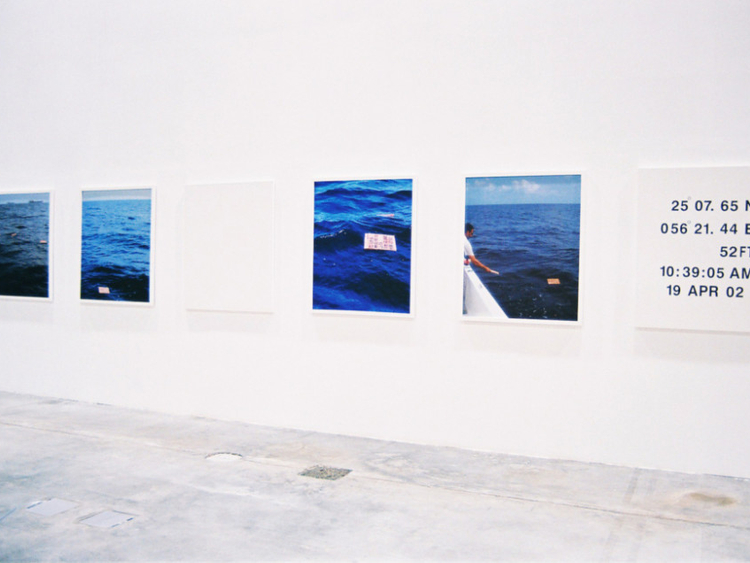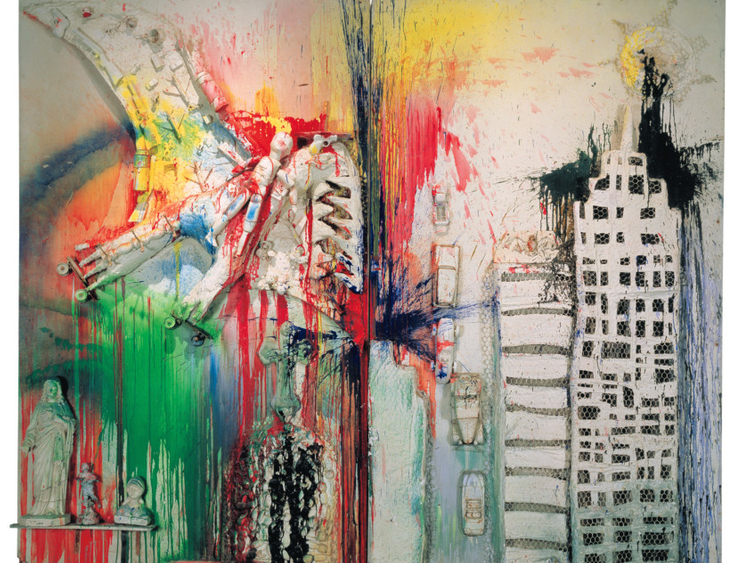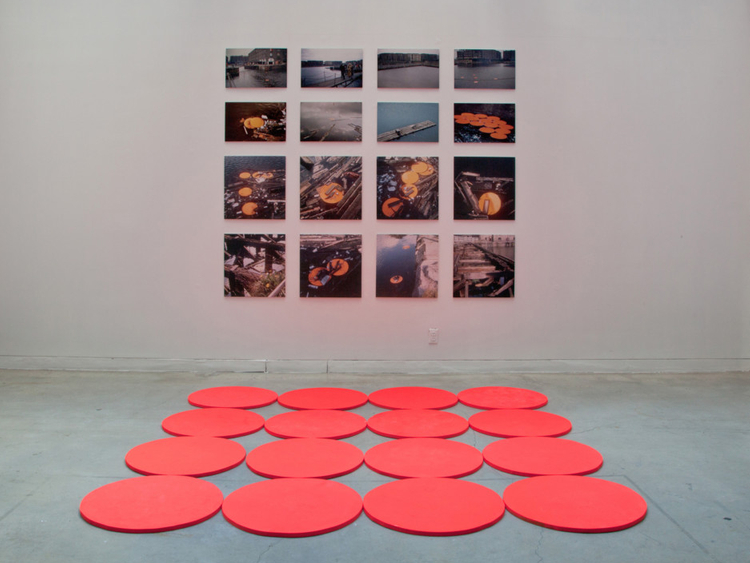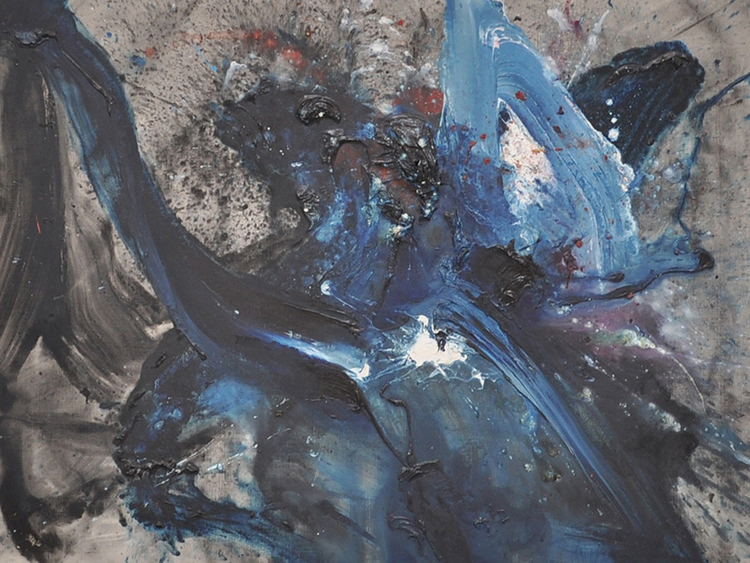
Arts enthusiasts rejoice — Guggenheim Abu Dhabi is launching a new exhibition this March. “The Creative Act: Performance • Process • Presence” features a breathtaking range of artworks from 29 artists representing 12 nationalities. Emphasising the 2000s, the exhibition will also include collateral archival materials to further illuminate the creative process.
This time around, visitors will be treated to diverse pieces ranging from a 12-metre red wax sculpture by Anish Kapoor entitled “My Red Homeland”, which consists of a circular platform 12 metres across, holding 20 tonnes of wax and Vaseline mixed with a rich, red pigment and a mechanical arm that continuously builds up and erases form, to a drawing by Susan Hefuna from her “Notations” series that she produced as translations of the movements of dancers she spent time observing.
“On a basic level, this exhibition has more artworks in it, and the works overall are less abstract. Like ‘Seeing Through Light’ [Guggenheim Abu Dhabi’s 2014 exhibition], and the collection itself, it has works spanning the 1960s to the present, but ‘The Creative Act’ emphasises the 2000s more than ‘Seeing Through Light’ did,” Valerie Hillings, curator and manager, Curatorial Affairs, Abu Dhabi Project, Solomon R. Guggenheim Foundation, said.
Maisa Al Qasimi, programmes manager of Guggenheim Abu Dhabi, said: “What’s truly different about this exhibition is that it will not only display marvellous works of contemporary art, but it will also allow people to experience the artists’ creative trail of thought, and present the extents they reached to achieve and procreate their ideas into physical form.”
The four-month exhibition will also offer visitors the opportunity to reflect on the pieces’ fit in context to ongoing regional and global events.
“The works in the show address many questions that are both eternally and currently relevant. What does it mean to live and be in the world in a given time and place? The question of where we come from and how we fit into the places where we live and travel — that sense of mobility that underlies contemporary life — is something many of the artists explore. The impact of the past on the present, specifically what we can learn from those who came before us, is another aspect,” Hillings said.
Additionally, “The Creative Act” will feature pieces by leading UAE and regional contemporary artists.
“[The exhibition] will feature works of some of the most notable Emirati artists in the field, with an artwork by Mohammed Kazem, who primarily works with video, sound art, photography and performance, alongside a series of works by the artistic giant Hassan Sharif, and commissioned photographs by Tarek Al Ghoussein,” Al Qasimi said.
Hillings and Al Qasimi also highlighted the rigorous process to organise such an event.
“Our main task as a collective group lies in our mission to narrate a cohesive set of events and histories seamlessly within the space of a single gallery, through a body of very diverse and different artworks ... We go through rigorous research and in-depth meetings, discussing how and where an artwork, suggested by one of our team members, could fit accurately in the layout of the exhibition, as well as within the context of Guggenheim Abu Dhabi’s narrative,” Al Qasimi said.
“The first challenge we face is deciding which artists to pursue, then which body of work within their oeuvre, and then we have to find the right choice. You can think of the process as hunting; we conduct our research, then reach out to and visit artists, galleries ... This can take a long time or in certain cases, we chance upon something and start messaging the members of our team immediately to say, ‘I have found it!’ We work as a team, and once a work is found, we debate it at length before deciding to acquire the work,” Hillings added.
In addition to introducing the public to Guggenheim Abu Dhabi’s collection, Hillings hopes that “The Creative Act” will further enrich the relationship between the museum and the public. “One of the most defining aspects of the curatorial vision for the collection and the future museum is the aim to offer multiple perspectives, telling distinctive stories, thereby introducing the public to artists and histories that may be unfamiliar, while identifying points of interconnection and transcultural exchange and transgenerational influence.
“We have a strong focus on the work of artists from the region and those living here, and we believe we can play a role in raising awareness of the remarkable cultural achievements. Hopefully that can lead to others supporting and strengthening artists from the region and getting involved in their local arts scenes.”
Though the body of work to be displayed is impressive, asked if they had any favourite pieces, each revealed a different selection. For Hillings, it is Rasheed Araeen’s “Chakras I”, a series of photographs of 16 red discs that he had invited resident artists, friends and members of the public to release into the Thames River in London on February 21, 1970.
“‘Chakras I’ is one of our collective favourites because Araeen was among the pioneers who invited spectators to actively participate in realising his work ... this action was a conceptual representation of his own experience of London as an artist who had come to the city from Pakistan. The floating discs serve as metaphor of the rapid evolution within the UK at the time and London’s adaptation to the society of recent migrants, breaking the barriers of social hierarchies,” she said.
For Al Qasimi, it is Kapoor’s “My Red Homeland”. “I [saw it] for the first time in the Royal Academy of Art back in 2009 ... The first time you see this piece you can’t help but be immersed in the endlessness of the round, reflecting forms, in the unsettled colour of the wax, and the silent, slow and continuing motion ... What makes this piece close to my heart is the artist’s unusual assembly of materials. The combination of prefabricated metal running through the soft mixture of wax and Vaseline, reshaping it with every single rotation gives a very strong, yet imperishable, organic feeling, expressing the inexhaustible continuity of life.”
These perspectives also highlight what the exhibition means to both Hillings and Al Qasimi: a place where people can reflect on how the artworks relate to their everyday lives or to the wider events happening in the world around them.
“The works in ‘The Creative Act’ will reflect many relevant questions and concepts in our day-to-day life that any visitor, regardless of his or her background, nationality, ethnicity or age, can immediately and naturally relate to; questions that speak to our innate philosophical needs to understand our existence on earth, as human beings. Resonating with the Guggenheim Abu Dhabi’s curatorial account, it offers multiple perspectives of distinctive stories, thereby spreading webs of connections over cultures, generations and time periods since the 1960s,” Al Qasimi said.
“One of our goals is to encourage people to embrace their own creativity and become observant of the meaning and value of seemingly commonplace objects and their encounters and experiences as they move through their own cities and routines. We also want to show that contemporary art is not just about passively looking, and it can assume many and different forms,” Hillings said.
Both hope the exhibition will encourage art lovers of all ages to explore the pieces on display as well as the rich accompanying programme, which features discussions, workshops and more.
“There are many elements of the show that demonstrate the link between art and everyday life. We certainly want them to see the Guggenheim Abu Dhabi as a place where they can have educational and inspirational encounters,” Hillings said.
“My hope is that people will find a great sense of inspiration and relevancy in this mesh of ideas, honouring what we as humans have in common instead of focusing on the differences that drive us away from each other, in a world so cold and impersonal,” Al Qasimi said.
Nathalie Farah is a writer based in Abu Dhabi.
“The Creative Act: Performance • Process • Presence”, will run at Manarat Al Saadiyat from March 7 until July 29. For more information about the exhibition, visit www.saadiyatculturaldistrict.ae
















